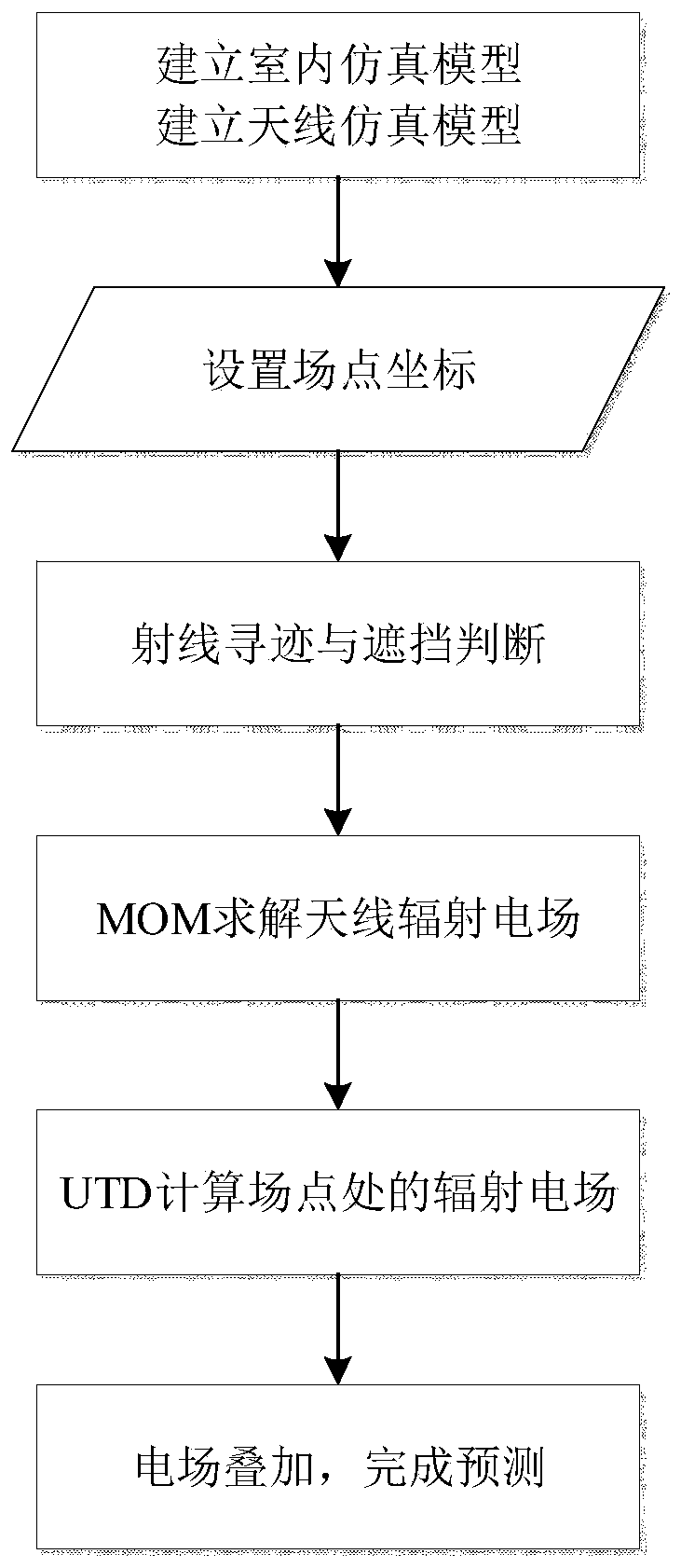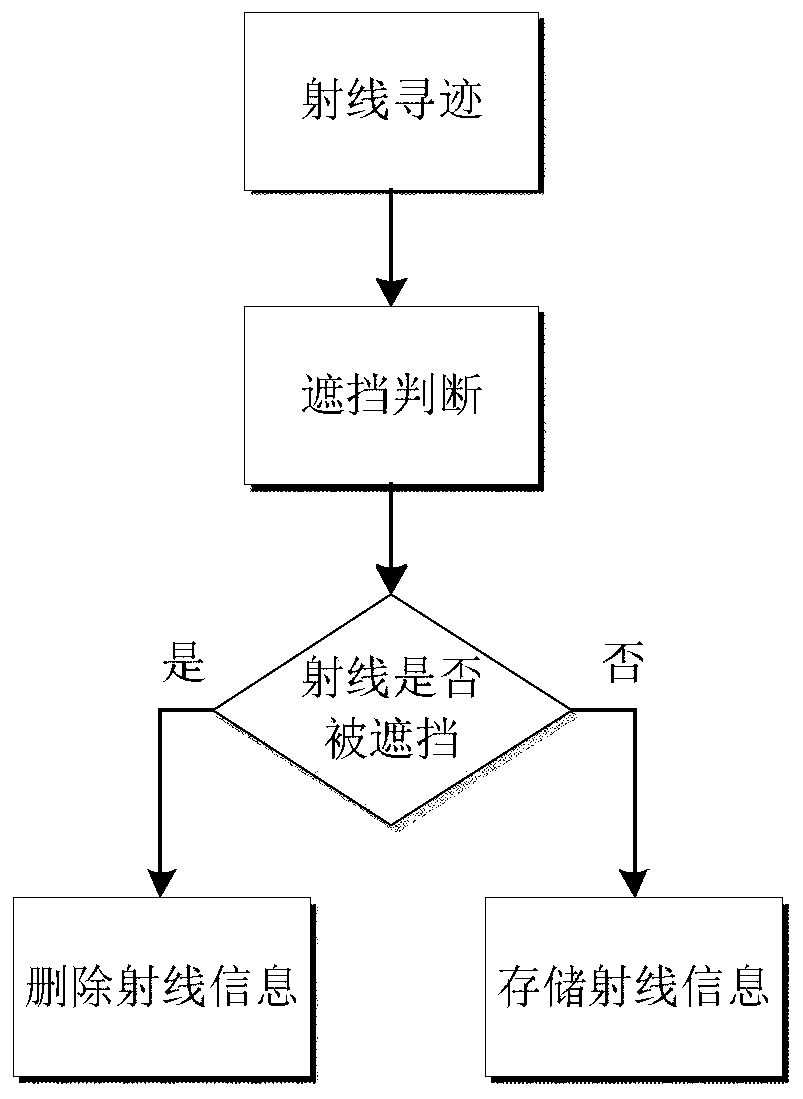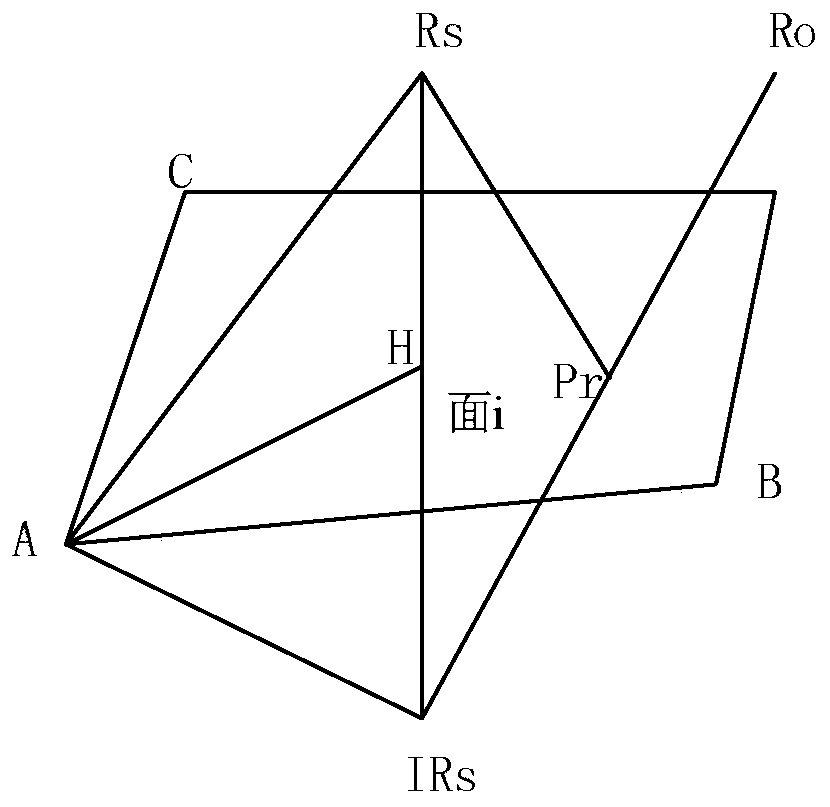Indoor electromagnetic environment prediction method based on combination of MoM and UTD
An electromagnetic environment and prediction method technology, applied in the field of computational electromagnetics, can solve the problems of inability to solve the model edge diffraction ray problem, inability to accurately calculate the antenna radiation field, and increase in computing resource occupation, so as to reduce labor costs and material costs, The effect of improving the accuracy and speeding up the calculation speed
- Summary
- Abstract
- Description
- Claims
- Application Information
AI Technical Summary
Problems solved by technology
Method used
Image
Examples
Embodiment Construction
[0027] The embodiments and effects of the present invention will be described in further detail below in conjunction with the accompanying drawings.
[0028] refer to figure 1 , the implementation steps of this example are as follows:
[0029] Step 1, establish indoor simulation model and antenna simulation model.
[0030] 1.1) According to the actual indoor building, use the existing Hobbies software to simulate and model the indoor building to obtain the indoor simulation model. The indoor simulation model includes geometric information, material information and the corresponding relationship between geometric information and material information. The geometric information includes Surface, edge, and point coordinates of the building, and material information including the relative permittivity ε of the building material r , relative permeability μ r and the electrical loss coefficient σ, the corresponding relationship between geometric information and material informatio...
PUM
 Login to View More
Login to View More Abstract
Description
Claims
Application Information
 Login to View More
Login to View More - R&D
- Intellectual Property
- Life Sciences
- Materials
- Tech Scout
- Unparalleled Data Quality
- Higher Quality Content
- 60% Fewer Hallucinations
Browse by: Latest US Patents, China's latest patents, Technical Efficacy Thesaurus, Application Domain, Technology Topic, Popular Technical Reports.
© 2025 PatSnap. All rights reserved.Legal|Privacy policy|Modern Slavery Act Transparency Statement|Sitemap|About US| Contact US: help@patsnap.com



